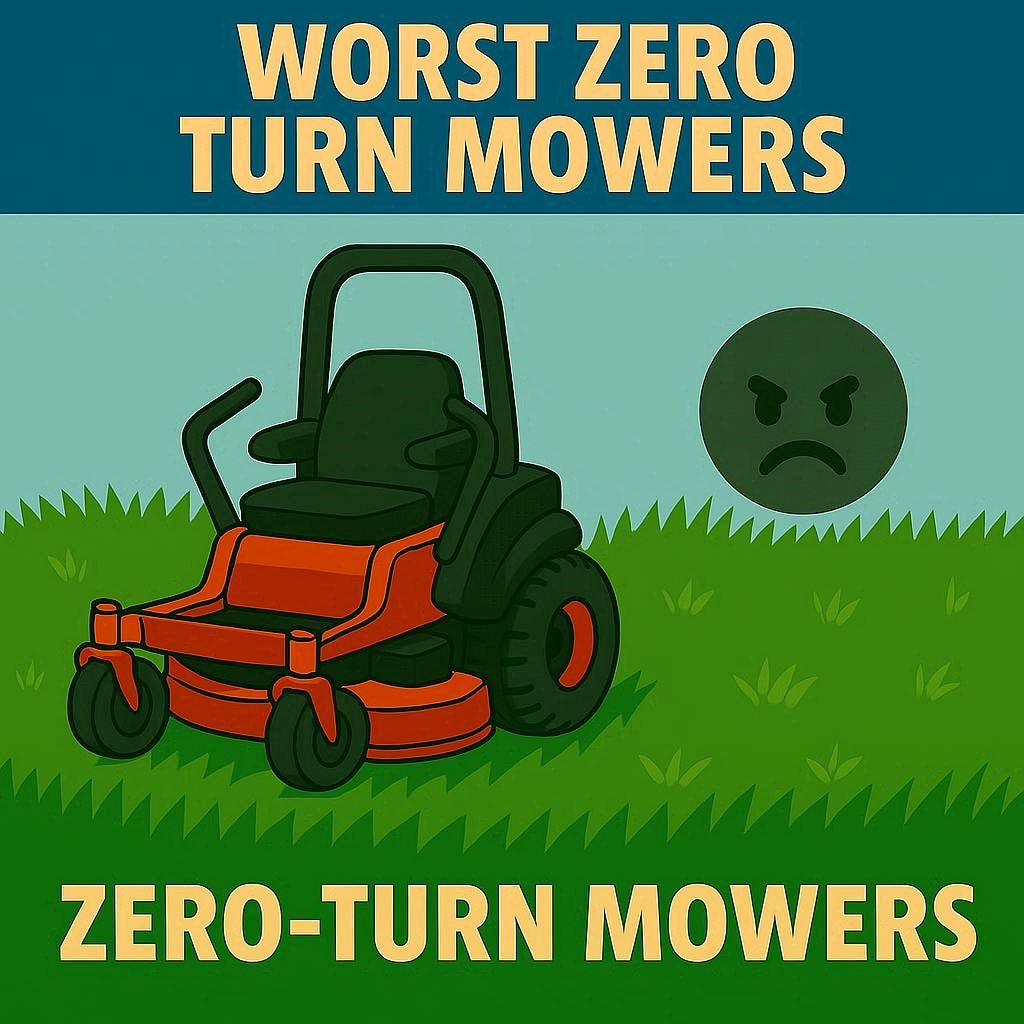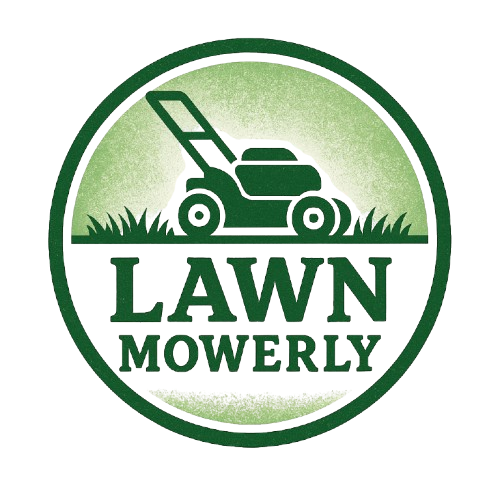
Here’s a is my brutally honest, well-researched look at some of the worst zero-turn mowers and the frequent complaints users make — what to avoid, what they get wrong, and what buyers should watch out for. This isn’t about tearing down every model; it’s about common pitfalls and what lessons you can draw from them so you don’t suffer regret.
🔍 What Makes a Zero-Turn Mower “Bad”
Before we list specific brands and models, let’s define what people mean when they call a mower “bad.” Issues typically fall into these categories:
- Poor durability: weak frames, flimsy parts, or components failing early.
- Inconsistent cut quality: uneven blade performance, deck warping, bad airflow.
- Weak drivetrain / transmission problems: hydro stats slipping, belts breaking, handling hills poorly.
- High maintenance cost / hard to get parts.
- Poor customer support / warranty trouble.
- Uncomfortable ride / bad ergonomics.
- Overpriced for what you actually get.
Keeping those in mind will help you spot red flags before buying.
🛑 Specific Brands & Models That Draw Heavy Criticism
Based on multiple reviews and user feedback (forums, blogs, lawn-gear sites), here are some zero-turn brands and models that tend to show up on “worst of” lists — and why.
| Brand / Model | What Users Complain About | Key Negative Features |
|---|---|---|
| Poulan Pro P46Zx / P54Zx | Poor build quality, weak engine & transmissions, parts break easily. (MowersLab) | Plastic or thin metal parts, belts slipping or burning out, steering issues, engine or fuel system failures. |
| Swisher ZTR2454BS | Heavy fuel usage, poor maneuverability, weak cut performance. (MowersLab) | Large fuel consumption; drive belt or deck issues; difficult turning in tight areas. |
| Husqvarna Z254 / MZ61 | Deck fragility, inconsistent cuts, plastic parts failing, poor support. (MowersLab) | Plastic housings breaking; belts and deck components wear quickly; engine struggling on slopes. |
| Cub Cadet (residential/entry models) | Poor engineering details, wobbly seats or deck, unreliable controls or components. (Desired Lawn Mower) | The deck may warp; parts misaligned; lower-tier hydros or transmissions losing efficiency. |
| Country Clipper | Bad customer service, frequent warranty and parts issues. (Desired Lawn Mower) | Slow response from dealers; hard to get certain replacement parts; belts, steering, or deck alignment problems. |
| Dixie Chopper CL3572KW | Price premium doesn’t match reliability; frequent breakdowns in engine, transaxles, or belts. (fypower.org) | Expensive repairs; lower durability in humid or rough conditions; parts wear out fast. |
🔧 Common Themes in What Goes Wrong
From digging through user complaints, a few recurring mistakes or design choices seem to cause the most trouble. These are what separate the “bike that works” from the “bike that gives you headaches.”
- Cheap Materials in Non-Critical Areas
Sometimes publications/designers use thin steel, light gauge stamped decks, plastic grass chutes, or soft seat hinges. These might save cost up front but fail under heavy use. - Weak/Overstressed Transmissions & Hydraulics
When mowers are used frequently, in thick grass or hilly terrain, transmission leaks, hydrostat overheating, or drive belt slugging happen a lot — especially when the specs are marginal for the load. - Poor Deck Design / Airflow Problems
Uneven cuts, scalping, or grass buildup under the deck often result from poor deck construction, bad blade design, or poor belt alignment — even if engine power is adequate. - Ergonomics & Comfort are Overlooked
Seats that flop, poorly placed controls, vibration, lack of suspension — users report fatigue, back pain. Sometimes cheaper residential models sacrifice comfort too much. - Warranty & Support Are Weak Spots
Many mowers that look good on paper suffer in real life due to parts being unavailable locally, delays from dealers, or warranty claims being denied or difficult. Even among brands with good reputations, certain models or specific serial ranges seem to have higher failure rates. - Misleading Spec Listings
Some mowers advertise high horsepower or deck size but skimp on supporting features — weaker engines, thin frames, cheap components — so actual performance lags expectations.
🧪 Lessons Learned: What to Avoid / What Questions to Ask
If you want to avoid being burned by a problematic zero-turn, here are key due diligence steps:
- Read reviews from actual owners, not just spec sheets — look for those who’ve used the mower for 1-3 seasons.
- Check deck gauge and type — fabrications or welded decks are stronger; stamped decks are lighter but often less durable.
- Inspect transmission / hydro unit design — are components sealed? Do they have good cooling or airflow? What warranty is offered?
- Seat, controls, ride comfort — try sitting in the mower; test turning radius; test it in slightly uneven ground if possible.
- Parts availability / dealer proximity — even a good machine is no good if you can’t get parts or service.
- Power vs deck width balancing — underpowered engine + wide deck = struggle, poor cut.
- Warranty fine print — what’s covered? belts, deck, transmission, etc. Are there time/usage limits?
✅ My Bottom Line: Mowers to Steer Clear From
If I were buying today, here are the models / brands I’d avoid unless under certain conditions (cheap used, very light mowing, or you don’t mind trouble):
- Poulan Pro P46Zx / P54Zx — Might tempt you on price but seem to cost you in frustration and repairs. Not for heavy or frequent mowing.
- Husqvarna Z254 / some MZ61s — Decent brand name but certain models cut corners (pun intended) on durability.
- Cub Cadet’s lowest trim residential zero-turns — If you have a big lawn, rough terrain, or want long life, those models tend to bite back.
- Country Clipper (consumer line) — Only if you know you have great dealer support and easy access to parts.
🌟 What Makes a Good Zero-Turn (Contrast with the Worst)
To help you recognize what to aim for, here are features seen in best-performing models — the opposite of what the worst ones lack:
- Rigid, well-braced frame and strong deck material (7 gauge steel, welded, ample reinforcement).
- Smooth and responsive hydrostatic drive, good transaxles, under‐deck and drive belt serviceability.
- Solid seats, good shock isolation or deluxe seat mounts, ergonomic lever or joystick controls.
- Reliable engines from known brands (Kawasaki, Briggs & Stratton (commercial line), Kohler, etc.), proper cooling, good fuel systems.
- Dealer/dealer network that stocks parts, responds well to warranty, has good reputation.
🔚 Final Word
There are plenty of zero-turn mowers out there that cost a lot more in headaches than they save in time. The ones people most regret tend to be models that look great on paper, have slick marketing, but cut costs in materials, support, or detailed engineering.
If you’re serious about investing in a zero-turn mower, don’t just buy specs — buy proven durability, parts availability, comfort, and transparency from the seller. The worst machines will make you wish you had done more homework.
If you like, I can pull together a comparison table of “Worst vs Best” features or even list some good counter-examples (brands reliably praised) so you have “what to look for beside what to avoid.” Do you want me to build that next?

I’m David man behind Lawn Mowerly; I’ve been dealing with lawnmowers and Tractors with my father since I was a kid. I know every make and model and what each one is capable of and love helping people find the perfect equipment for their needs.
